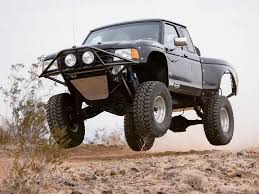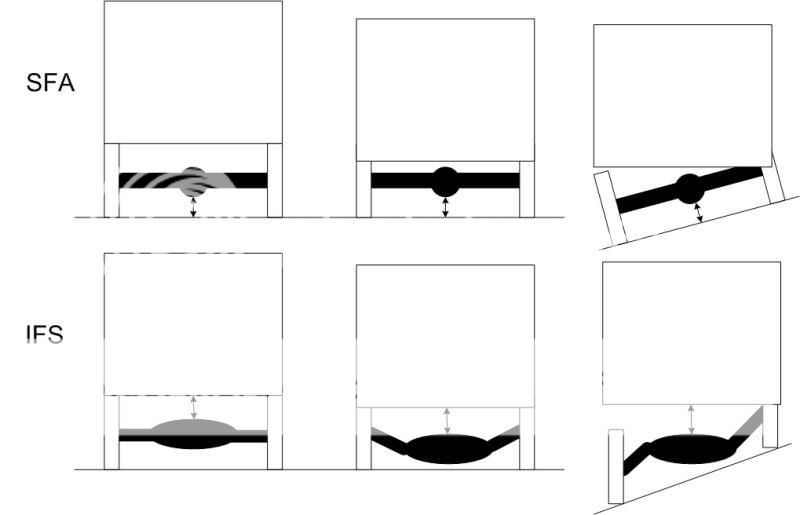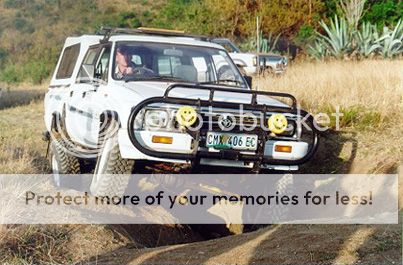RE: Land Rover Defender | Frankfurt 2019
Discussion
Pesty said:
I’ve also been wondering about this.
Do we know that these engines arent completely identical but just using a different map ? There’s about a 5k difference for 40hp.
Sees daft.
200 is fine in a diesel with that amount of torque.
Looking at configurator as this suprised me it seems:Do we know that these engines arent completely identical but just using a different map ? There’s about a 5k difference for 40hp.
Sees daft.
200 is fine in a diesel with that amount of torque.
D200 spans Base, S & SE
D240 starts at S then SE and HSE.
Hence half the 5k is related to the better trim level rather than solely 40bhp.
JonnyVTEC said:
Pesty said:
I’ve also been wondering about this.
Do we know that these engines arent completely identical but just using a different map ? There’s about a 5k difference for 40hp.
Sees daft.
200 is fine in a diesel with that amount of torque.
Looking at configurator as this suprised me it seems:Do we know that these engines arent completely identical but just using a different map ? There’s about a 5k difference for 40hp.
Sees daft.
200 is fine in a diesel with that amount of torque.
D200 spans Base, S & SE
D240 starts at S then SE and HSE.
Hence half the 5k is related to the better trim level rather than solely 40bhp.
M
camel_landy said:
Well.... IIRC, the only difference between the Freelander 2 TD4 & SD4, was a single 'bit', set in the ECU. Based on that, it wouldn't surprise me to find these engines are identical other than a different map.
M
You were right on the old DW12c sourced from PSA, apart from the ultra low flow version with different injectors and less NVH (predominantly in Jags and 2WD LRs) the engines were identical hardware for the 150/190PS spec.M
The new Ingenium diesels however have 3 distinct derivatives, Low, Mid and High, with some commonality between them, pretty much the main difference is fuel system between low and mid and boosting system (single turbo low & mid vs. sequential twin on high)
Davyf said:
I think this is an eyesore, it is no longer a farmers vehicle that they were originally designed for. I was a long time Land Rover technician, but have never been a fan of ''soft roaders'' which mostly are driven by people who do not need them for anything other than transporting children and doing a bit of shopping.... rant over.....
soft roaders are light duty vehicles that are based on car bits.The new defender is a big solid lump of a thing, the suspension and drive components are massive and heavy, it has low range and lots of locking diffs, the underside is almost dead flat with stuff neatly tucked away to improve ground clearance and it's all well protected with undertrays that are proper metal plate things rather than plastic covers.
All the mechanical stuff (that I've seen at least) is reinforced and braced with big bits of metal.
The interior (on the basic ones I've seen at least) is a lot more spartan than a Velar for example, the floor mats are chunky rubber things, the seat fabric feels not in the least bit flimsy
a soft roader it is not, though I guess you probably could break off the gear selector if you really tried.
Points of reference: series 3 county 88", Defender (90, 110 and military), discovery 1, 2 and 3, mitsubishi pajero and shogun, toyota land cruiser colorado, jeep GC WK, Range rover classic, probably others
camel_landy said:
Well.... IIRC, the only difference between the Freelander 2 TD4 & SD4, was a single 'bit', set in the ECU. Based on that, it wouldn't surprise me to find these engines are identical other than a different map.
M
They're not the same engine, though there is clearly some commonality, the 200bhp one is single turbo and the 240bhp engine is twin turbo for a startM
Sporky said:
A serious question - sorry - are live axles really all that off-road?
I only do unmade roads, building sites, and forest fire tracks. I appreciate that serious off-roading is a different prospect.
I know Max has answered with his typical I'm an engineer approach and that Land Rover are the only car company in the world to understand off road cars.I only do unmade roads, building sites, and forest fire tracks. I appreciate that serious off-roading is a different prospect.
But I think it is a little more complex.
Suzuki introduced a new Jimny last year, aimed predominately at off road performance.
Jeep also introduced a new model the JL Wrangler, with a similar remit.
Dodge also introduced a new off road biased pickup.
Toyota in markets outside Europe still produce and sell vehicles aimed at being used off road.
The one thing in common, all of them use live axles. So one has to ask the question, are all these other companies, designers and engineers all imbeciles. Or have they deliberately selected live axles for a reason? I'll leave that one for you to ponder.

The following is my thoughts and opinion on the matter.
Live axles just work off road for the fact they, when coupled to compliant long travel suspension. Allow very good stability on rough terrain, especially at low speeds, which are usually the norm off road. This stability is inherent due to the fact then when one wheel is pushed up, the opposite wheel is pushed down. Thus helping to keep the wheels on the ground more of the time.
Independent suspension is capable of fairly good wheel travel up and down and can be comparable to many stock live axle setups. Although to achieve this you need to have long arms and CV's capable of extreme angles. On many IFS pickup trucks once modified they often suffer with very high failure rate of front driveline components. If you are running them lifted or trying to increase the travel.
Wide arms also generally make for a wider vehicle. Less of an issue these days as many vehicles are bigger, but the result is, it is harder to achieve on a smaller vehicle and keep the track width narrow for a mass market vehicle.
The Ford Raptor is significantly wider than the regular truck, partly due to having longer suspension arms for more travel.
However the biggest limiting factor with most independent setups is stability. As a wheel gets push up, instead of pushing the opposite wheel down, it will tend to lift the vehicle more so, cause a weight shift and lift wheels off the ground, often with dramatic results as a vehicle balances on 3 wheels, then suddenly lifts a 3rd wheel and rocks over violently.
Now Land Rover were very very clever here. Vehicles such as the D3 use 'cross-linked' air springs. This means when a wheel is pushed up, the air from one spring is then use to push the opposite wheel down. It is essentially trying to mimic the behaviour of a live axle. And arguably to very good effect. This system is truly impressive and something that generally separates Land Rover's off road from the rest of the field that use also use independent suspension.
The system on the new Defender is just a development of this technology and likely works in exactly the same way.
The downside, while it does an admirable job to simulate a live axle, it still isn't one. And I suspect if you put a new Wrangler Rubicon and a new Defender on some purpose made off road sections to demonstrate their suspension. The Wrangler would still be the more stable. But this is only at the extreme end of off roading. For normal use the air setup is more than capable.
It is however, exceedingly more complex and expensive. Making the initial cost and long term maintenance higher. And ultimately less durable. The Land Rover suspension fully relies on a host of sensors and computing power. Should something fail, it quite literally can bring the entire vehicle crashing down to it's bump stops.
And if you look at pretty much any form of competitive off road use that requires stability and wheel travel, it is almost exclusively live axle. There are very few independent suspension vehicles. Maybe 1-2% or less. If you are interested in this, watch some Rock bouncing on Youtube. Generally two classes, purpose built V8 live axle machines. And smaller UTV based independent ones, also custom built. As a rule the UTV class tend to roll a lot more and you can see it is often down to the stability or comparative lack, compared to the live axle vehicles.
This isn't the entire picture though. If you are travelling at speed over rough terrain, then the answer is somewhat reversed. Generally independent suspension will give a more compliant and forgiving ride when travelling quickly off road. Which is why most off road race vehicles run at least independent suspension at the front.
There are some other things to consider. Ground clearance, independent should have more initial clearance as a rule, due to the diff being mounted on the vehicle frame/supporting structure. But as the suspension compresses it will reduce. The H1 Hummer (or it's military HMMWV counterpart) addresses this by having huge long suspension arms and placing the diffs up really high. The result is a very wide vehicle however. And it still looses clearance under compression. But has more than enough to not worry.
Many road going mass market vehicles fair less well and if you watch any off road vids on YouTube of things like the Ford Ranger, Toyota Hilux or other IFS equipped vehicles, you'll see they often beach or hit the underside. Partly this is due to wheelbase, but you can see that as the front suspension is compressed, they end up grounding near the front of the vehicle, rather than the live axle rear.
Wheel geometry is also radically impacted with long travel independent setups. Mostly this is fine, but can look odd.


For me, it's the feel of the vehicle off road too though. The body will generally stay quite flat with a live axle.

vs

It can also be quite unpleasant too.

But in fairness, thanks to the clever cross linked air setup of the Land Rover's, most of these potential issues are avoided. But it does remain a complex answer to a simple question. And the only reason they opted for this, was to try and make the vehicles more car like on road. Which I personally am not a huge fan of. I rather like a 4x4 to drive like a 4x4 on the road, it is one of the things that appeal. But I suspect I'm in the minority, at least on PistonHeads.
Live axle vehicles really aren't all that bad on road either. My Range Rover is more comfortable and rides better than my all independent suspension Subaru was. And it handles perfectly fine and is in no way a chore to drive. Or to put it this way, jumping from a D4 or L322 into my p38, you don't actually think. I wish this had independent suspension instead of live axles. It's just a non-issue. And if anything the p38 is slightly more compliant.
For the market/price point and intended customer of the new Defender I think their clever air sprung system is a good answer. I suspect the base coil 90 will be less useful however (just look at how poor a Gen 3 Shogun is off road vs a Gen 2). But only time will tell on this. For a true successor to the Defender, i.e. something more akin to the original and more aligned to the Wrangler. Then live axles, would IMO be the way to go for such a vehicle.
Good video showing how the D3's suspension works:
https://www.youtube.com/watch?v=UDqVFkW7GIA
300bhp/ton said:
doesn't the new Defender weigh 2.2 tonnes though. 180hp in a vehicle weighing less may well go just as well.
That said, the petrol looks to be the way to go.
it does, I'm simply saying that 180 bhp in an L200 is perfectly adequate, as is 200 bhp in the new defender, however people are picking up on the new defender having 'only' 200 bhp, while often in the same post saying that it is not a heavy duty work horse like the L200/hilux/D max etc isThat said, the petrol looks to be the way to go.
camel_landy said:
Well.... IIRC, the only difference between the Freelander 2 TD4 & SD4, was a single 'bit', set in the ECU. Based on that, it wouldn't surprise me to find these engines are identical other than a different map.
Mr.Jimbo said:
You were right on the old DW12c sourced from PSA, apart from the ultra low flow version with different injectors and less NVH (predominantly in Jags and 2WD LRs) the engines were identical hardware for the 150/190PS spec.
The new Ingenium diesels however have 3 distinct derivatives, Low, Mid and High, with some commonality between them, pretty much the main difference is fuel system between low and mid and boosting system (single turbo low & mid vs. sequential twin on high)
Ta muchly...The new Ingenium diesels however have 3 distinct derivatives, Low, Mid and High, with some commonality between them, pretty much the main difference is fuel system between low and mid and boosting system (single turbo low & mid vs. sequential twin on high)
BRR said:
They're not the same engine, though there is clearly some commonality, the 200bhp one is single turbo and the 240bhp engine is twin turbo for a start
Ahhh... Missed that bit, which sorta backs up what Jimbo says. 
M
Fermit and Sexy Sarah said:
Not even close. The image I pasted is the current cut and paste nose of all other LR/RR models. The second one is a completely different design language.
I suspect that might be different language if you mean someone from Sheffield speaks a different language to someone from Manchester.... else it's all much of the same and very similar.300bhp/ton said:
So one has to ask the question, are all these other companies, designers and engineers all imbeciles. Or have they deliberately selected live axles for a reason? I'll leave that one for you to ponder.
Yes. Cost. There, I've condensed your rambling and somewhat nonsensical diatribe into a succinct and accurate summary.
deadtom said:
it does, I'm simply saying that 180 bhp in an L200 is perfectly adequate, as is 200 bhp in the new defender, however people are picking up on the new defender having 'only' 200 bhp, while often in the same post saying that it is not a heavy duty work horse like the L200/hilux/D max etc is
I suspect 200hp is fine in such a vehicle personally. The D3 TDV6 was only 193hp and irrc weighed a bit more. I'd still opt for the petrol myself though. Mpg looks more than acceptable and while it might lack the initial low end grunt of a diesel. 8 speeds and a lot more poke would make it a lot quicker I feel. Price for the petrol engine didn't seem too bad either unless I read it wrong.Gassing Station | General Gassing | Top of Page | What's New | My Stuff





